SUMMARY
This is AI generated summarization, which may have errors. For context, always refer to the full article.
![[Newsstand] No, the Far Left will not support Robredo](https://www.rappler.com/tachyon/2021/11/far-left-robredo-november-30-2021.jpg)
It has become increasingly clear to me that the national democratic Left will end up supporting another candidate for president in 2022. It won’t be Vice President Leni Robredo.
A yassified throng of clarifications immediately demands to be made. Bear with me:
1. The term “Left” has often been used in the Philippines as shorthand for national democrats; as I have written before, journalists like me have used it all too frequently to mean only the NDs, usually in reference to alliances like Bagong Alyansang Makabayan or party-list groups like Bayan Muna. But this use is not limited to journalists. It is pervasive. Even some ND leftists and their allies speak as though they, and only they, are THE Left. This is a mistake. There are other shades on the left of the political spectrum, even in the Philippines. Ka Leody Guzman, after his split from the Kilusang Mayo Uno, is a case in point.
2. In many instances, including in other countries, the ND-equivalent part of the spectrum is called, or labeled, extreme left. I do not wish to use this term anymore, because in polarized discourses “extremism” is yet another form of libel-by-label. To distinguish the three main shades of leftist politics in the country, we can simply use Far Left to describe the national democrats, Near Left to refer to the social democrats (such as Senator Risa Hontiveros and Akbayan) and Center Left to mean the liberal democrats (such as some members of the Liberal Party). The terms measure relative distance from the necessarily shifting but also remarkably stable political center. (If there are better alternatives, I’d be happy to use them.)
Most disciplined
3. The Far Left is the most disciplined political force in the country. The strength and consistency of their electoral bases have been demonstrated in seven elections since 2001, when Bayan Muna won over 25% of the total votes cast for party-list groups. That was electoral overkill; too many votes for a maximum of three seats. From 2004, the Far Left has fielded other party-list groups, and they have consistently won a handful of seats in Congress. The two biggest vote-earners, Bayan Muna and Gabriela, swapped electoral fortunes between 2016 and 2019, and some of the groups belonging to what has been formalized as the Makabayan coalition have lost their Commission on Elections accreditation, but for two decades the Far Left has consistently mobilized enough electoral support to maintain the longest continuing party-list presence in Congress.
4. The Far Left, however, has failed to win national office. None of its senatorial candidates, which include historical personalities like Satur Ocampo and legal lights like Neri Colmenares, have managed to cross the Senate threshold. Their totals are always between a third and just under half of the needed number; worryingly, their best performing candidate, Colmenares, lost votes between 2016 (6.5 million) and 2019 (4.7 million). Contrary to what some earnest supporters might say, the Far Left’s capacity to mobilize a few million voters for their Senate candidates is not a hidden strength but an obvious weakness; it shows the very real limits of their base.
5. The Far Left has opted more than once to align electorally with center-right or right parties. In 2001, Bayan Muna benefitted from a tactical alliance with the new president, Gloria Arroyo of Lakas CMD; that alliance continued controversially in the 2004 presidential elections. In 2010, Ocampo and another party-list representative, Liza Maza, formally entered the Senate slate of Senator Manny Villar, of the Nacionalista party. (They were joined by Ferdinand Marcos Jr.) In 2016, the Far Left ostensibly supported Grace Poe’s presidential campaign; the scholar Joseph Scalice has argued convincingly, however, that the evidence points elsewhere. The Far Left supported Rodrigo Duterte, of Davao Death Squad infamy. At any rate, with unusual alacrity, the Makabayan party-list alliance publicly offered its full support to Duterte mere days after the election. Duterte also filled three Cabinet positions with nominees from the Far Left.
Perfect tool
6. The NDs have since distanced themselves from President Duterte, after he turned on them. They and their allies and even their constituents have been repeatedly red-tagged, harassed, arrested, even killed. This is a terrible fate, and no amount of blame (or self-criticism) can justify it. The responsibility lies with the Duterte administration and its minions, who post the red tags or sign the arrest warrants or pull the trigger. In the National Task Force to End Local Communist Armed Conflict, or NTF-ELCAC, the Duterte administration found the perfect tool to simultaneously scare up a bigger specter of the insurgency than actually exists and draw support from local politicians. There is no justification for this odious task force either; it must be abolished.
7. The Far Left joined the 1Sambayan search for a common opposition presidential candidate – but on their own terms. “They were with us from the very beginning and very active with the discussions,” one of the convenors said. They joined as separate organizations and not as one bloc. When the time came to choose the common candidate, however, “they tried to delay the voting … to ‘fully’ discuss the matter.” And when Robredo was selected, “the bloc came up with a statement that essentially questioned the 1S process, not necessarily the choice.” Two other convenors have confirmed this account.
8. For reasons she has yet to fully discuss, Robredo did not include Colmenares in her diverse Senate slate. (I thought at that time that this was a mistake; I had not only voted for Colmenares in 2016, I thought securing the Far Left’s place in the slate was essential to opposition unity. I have since – and this is the whole point of the column – reconsidered.) It is interesting to note that a leader of the Far Left told me he did not think it was actually ex-senator Sonny Trillanes who objected to Colmenares’ inclusion. A fuller accounting of the decision-making process cries out to be written.
Burning bridges
9. All throughout, Colmenares has maintained a quietly serious tone; he has made pointed statements, but never at any point suggested the burning of bridges with Robredo. Two leading and influential thinkers of the Far Left, however, have been testing messages with a disturbing bent. Tonyo Cruz and Mong Palatino are gifted writers; a few weeks ago they used their gifts to argue that Robredo is a Duterte enabler. This is why I find their messaging disturbing; it is dishonest, specious, unprincipled. They point to Robredo serving for a few months as housing secretary or for a few days as anti-drugs czar, and ask why that service is not called enabling. The reason is clear, of course: Robredo did not enable Duterte because she opposed him when he ran and worked according to her own standards after he won, causing him to fire her. Really, people who helped build a political house of cards should not use gas for lighting.
10. In the last few days, they have tried new messages: Robredo is a “fascist” for tempering her call for the abolition of NTF-ELCAC with her support for the military’s counter-insurgency strategy. Anyone who supports the Vice President and does not call on her to change her stance is engaged only in a “politics of personality.” And criticism of Robredo’s views is legitimate, but any criticism of the Robredo criticism, for instance of Tarantadong Kalbo’s powerful but disproportionate pink Armalite cartoon, is “controlling.” More gaslighting.
Two writers
Should these two writers, influential as they are (even the military reads them) be treated as representing the Far Left? Not everyone who self-identifies as ND is as abrasive, as needlessly enemy-forming, as Cruz, who on calmer days improbably offers netiquette advice. (When I criticized him and others in 2018 for ganging up on Tess Garcia, he responded by writing a column comparing me to … Mocha Uson. A few of his colleagues reached out to me, not to apologize but to vent.) And not everyone is as internationally connected and respected as Palatino.
But more often than not, Palatino and especially Cruz have been the driving wedge of Far Left discourse on increasingly influential social media. I get the sense that, through their messaging, they are laying the groundwork that will justify not only not voting for Leni Robredo, but not supporting her at all.
Here’s the last clarification then.
11. I think the Vice President’s supporters should welcome this coming clarity. Let Cruz and Palatino, and the rest of the Far Left, criticize Robredo. Criticism is not only a social good; it can also be, all too often, a too-personal burden. But criticism from parties you no longer view as potentially supportive? Potentially no longer energy-sapping. If Robredo’s supporters assume that the Far Left will not in fact support her, they can assess and accept the criticism according to its true weight. – Rappler.com
Veteran journalist John Nery is a columnist and editorial consultant of Rappler.
Add a comment
How does this make you feel?
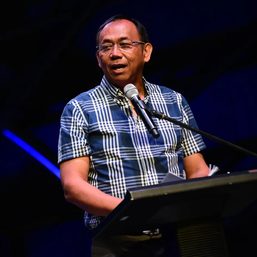
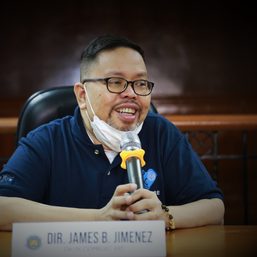
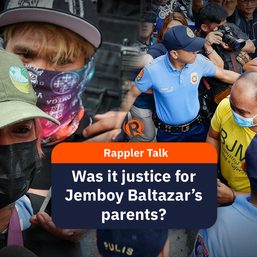
![[New School] Tama na kayo](https://www.rappler.com/tachyon/2024/02/new-school-tama-na-kayo-feb-6-2024.jpg?resize=257%2C257&crop=290px%2C0px%2C720px%2C720px)
![[Only IN Hollywood] After a thousand cuts, and so it begins for Ramona Diaz and Maria Ressa](https://www.rappler.com/tachyon/2024/02/Leni-18.jpg?resize=257%2C257&crop=262px%2C0px%2C720px%2C720px)

![[OPINION] Sara Duterte: Will she do a Binay or a Robredo?](https://www.rappler.com/tachyon/2024/03/tl-sara-duterte-will-do-binay-or-robredo-March-15-2024.jpg?resize=257%2C257&crop_strategy=attention)
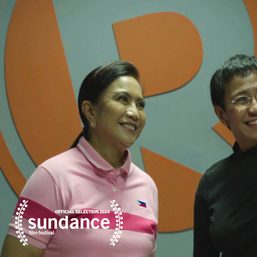
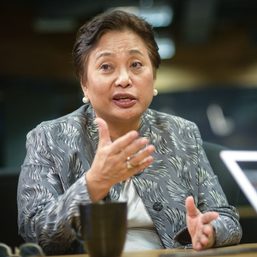
There are no comments yet. Add your comment to start the conversation.